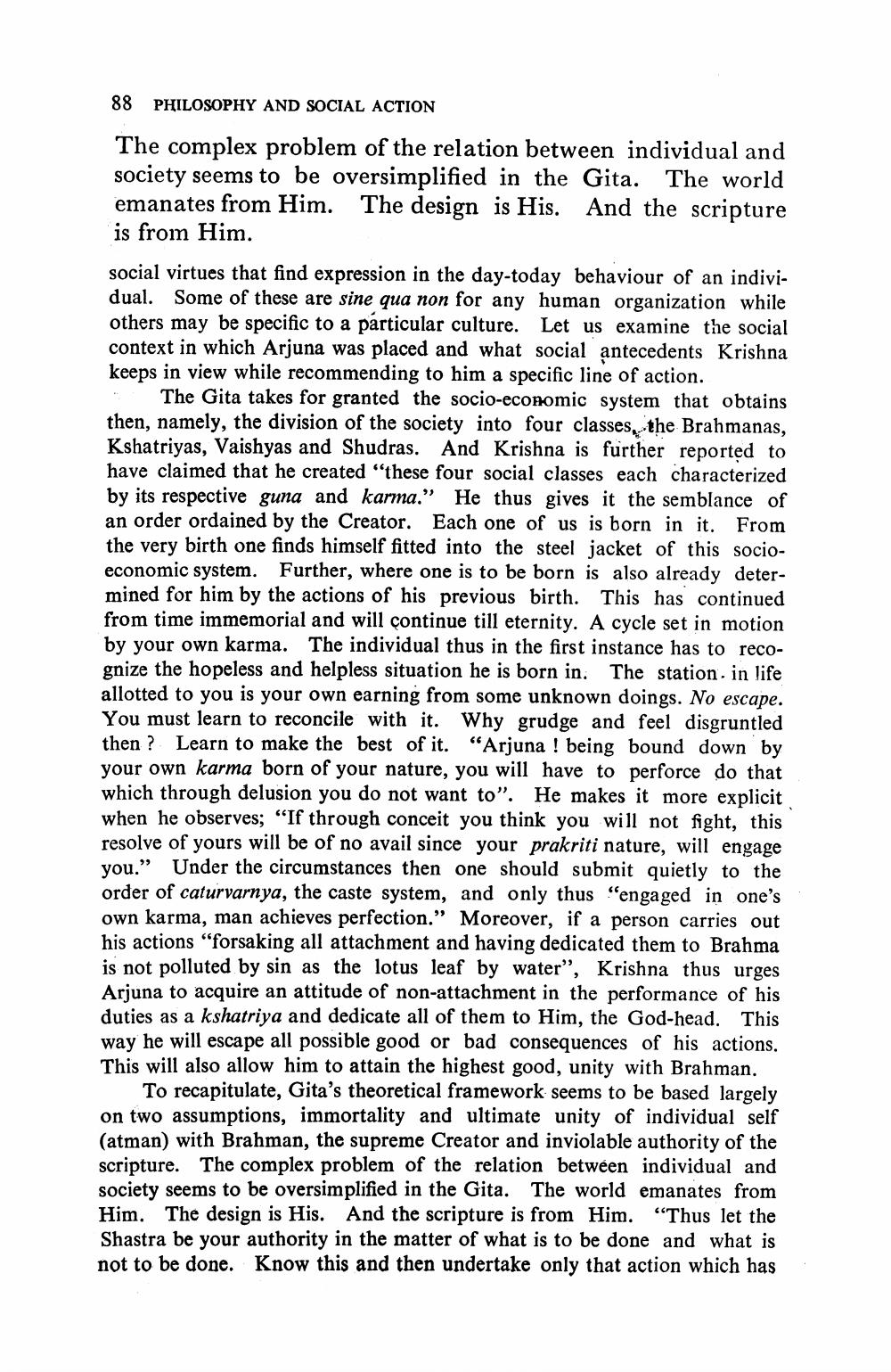________________
88
PHILOSOPHY AND SOCIAL ACTION
The complex problem of the relation between individual and society seems to be oversimplified in the Gita. The world emanates from Him. The design is His. And the scripture is from Him.
social virtues that find expression in the day-today behaviour of an individual. Some of these are sine qua non for any human organization while others may be specific to a particular culture. Let us examine the social context in which Arjuna was placed and what social antecedents Krishna keeps in view while recommending to him a specific line of action.
The Gita takes for granted the socio-economic system that obtains then, namely, the division of the society into four classes, the Brahmanas, Kshatriyas, Vaishyas and Shudras. And Krishna is further reported to have claimed that he created "these four social classes each characterized by its respective guna and karma." He thus gives it the semblance of an order ordained by the Creator. Each one of us is born in it. From the very birth one finds himself fitted into the steel jacket of this socioeconomic system. Further, where one is to be born is also already determined for him by the actions of his previous birth. This has continued from time immemorial and will continue till eternity. A cycle set in motion by your own karma. The individual thus in the first instance has to recognize the hopeless and helpless situation he is born in. The station. in life allotted to you is your own earning from some unknown doings. No escape. You must learn to reconcile with it. Why grudge and feel disgruntled then? Learn to make the best of it. "Arjuna ! being bound down by your own karma born of your nature, you will have to perforce do that which through delusion you do not want to". He makes it more explicit when he observes; "If through conceit you think you will not fight, this resolve of yours will be of no avail since your prakriti nature, will engage you." Under the circumstances then one should submit quietly to the order of caturvarnya, the caste system, and only thus "engaged in one's own karma, man achieves perfection." Moreover, if a person carries out his actions "forsaking all attachment and having dedicated them to Brahma is not polluted by sin as the lotus leaf by water", Krishna thus urges Arjuna to acquire an attitude of non-attachment in the performance of his duties as a kshatriya and dedicate all of them to Him, the God-head. This way he will escape all possible good or bad consequences of his actions. This will also allow him to attain the highest good, unity with Brahman.
To recapitulate, Gita's theoretical framework seems to be based largely on two assumptions, immortality and ultimate unity of individual self (atman) with Brahman, the supreme Creator and inviolable authority of the scripture. The complex problem of the relation between individual and society seems to be oversimplified in the Gita. The world emanates from Him. The design is His. And the scripture is from Him. "Thus let the Shastra be your authority in the matter of what is to be done and what is not to be done. Know this and then undertake only that action which has




